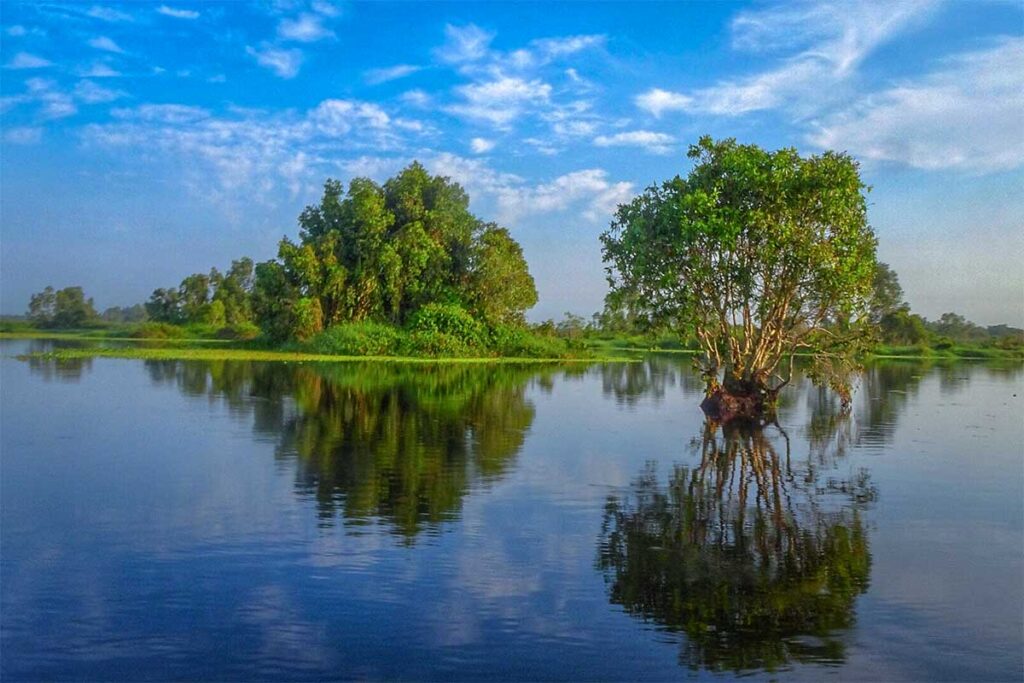What is U Minh Thuong National Park like?
Location & Scenery
U Minh Thuong National Park lies in U Minh Thuong District, Kien Giang Province, about 50–65 km from Rach Gia, the nearest city and most practical base. The landscape is shaped by peat-swamp forest, where melaleuca (cajuput) trees rise out of reddish, tea-colored canals. Floating mats of duckweed and water hyacinth cover parts of the waterways, giving the area a distinctive swampy look.
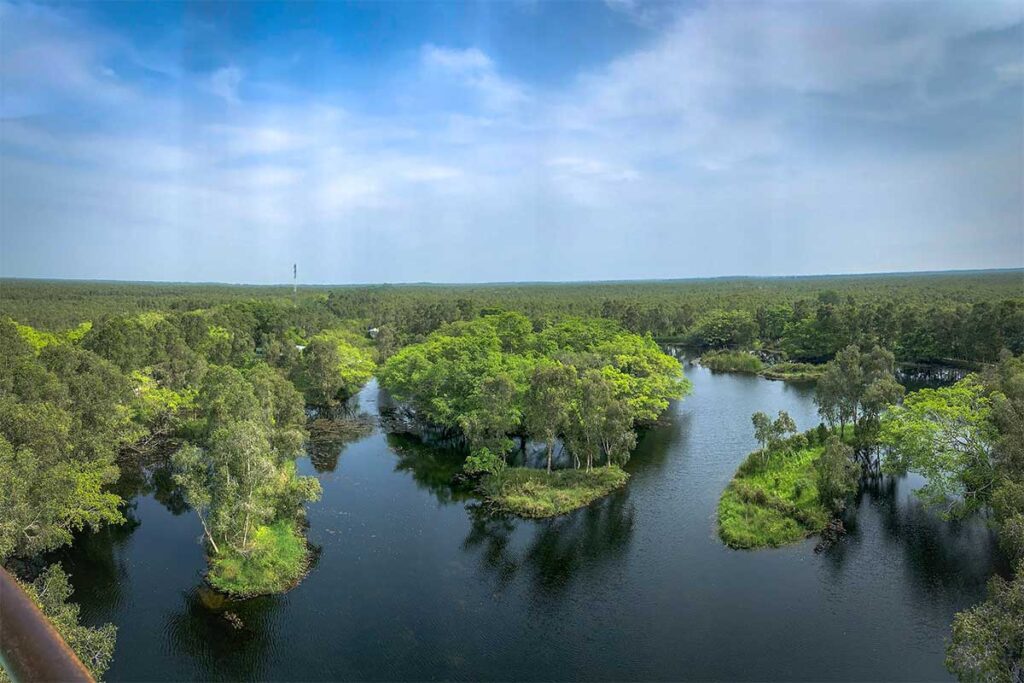
Most visits start around Hoa Mai Lake, which acts as the main hub for boat rides and short trails. U Minh Thuong forms the northern section of the wider U Minh forest ecosystem, while the southern section in Ca Mau Province is protected as U Minh Ha National Park. Though related, they are separate parks with their own entrances and management.
Biodiversity snapshot
The park is internationally recognized as a Ramsar wetland site and forms part of the Kien Giang Biosphere Reserve. Covering over 8,000 hectares, it protects one of the last significant peat-swamp forests in Vietnam.
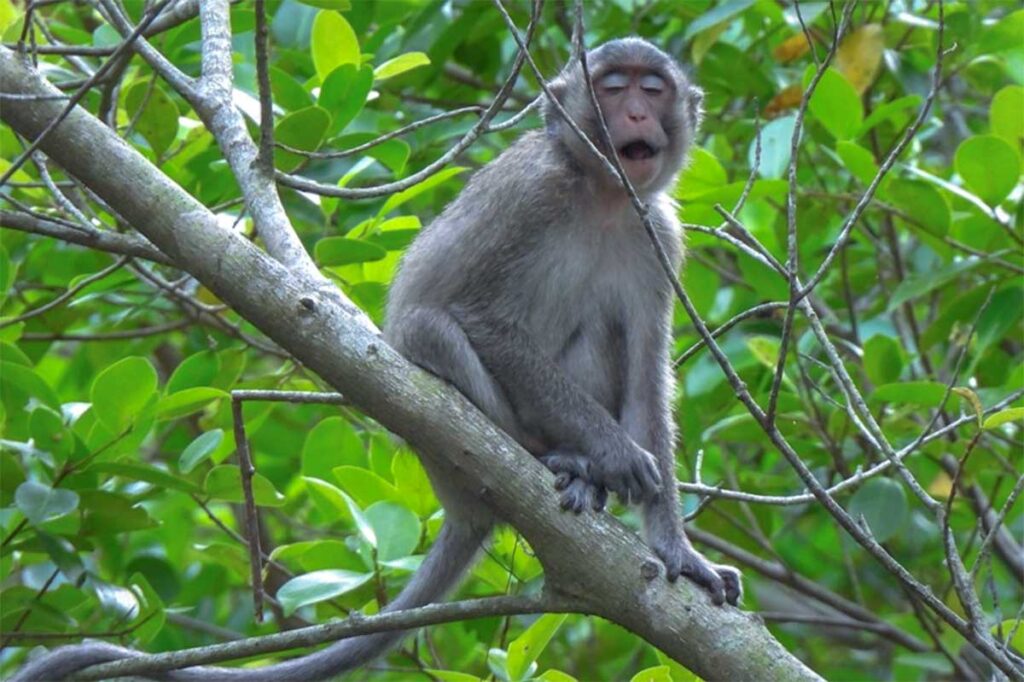
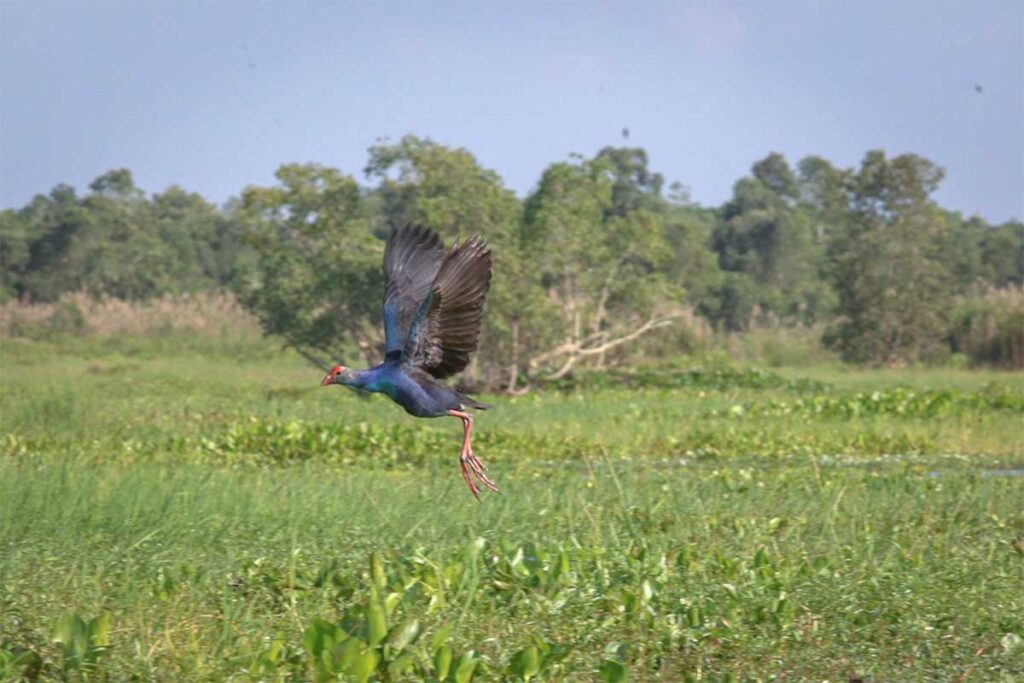
Wildlife highlights include rare mammals such as the fishing cat and the endangered hairy-nosed otter, plus more than 180 bird species. It’s also an important refuge for reptiles, amphibians, and native fish. While spotting these species depends a lot on timing and luck, birdlife and the melaleuca forest scenery are the most accessible draws for casual visitors.
History & Conservation context
U Minh Thuong was declared a national park in 2002, upgraded from a nature reserve to strengthen protection. Historically, the U Minh forest served as a Viet Minh and later Viet Cong base during the wars, which adds a layer of cultural memory to the landscape. Today, much of the park’s management revolves around water control—its canals and dykes are used to maintain water levels and reduce fire risk in the highly flammable peat layer. These measures also shape what visitors experience, as access routes often follow managed waterways.
Overall vibe
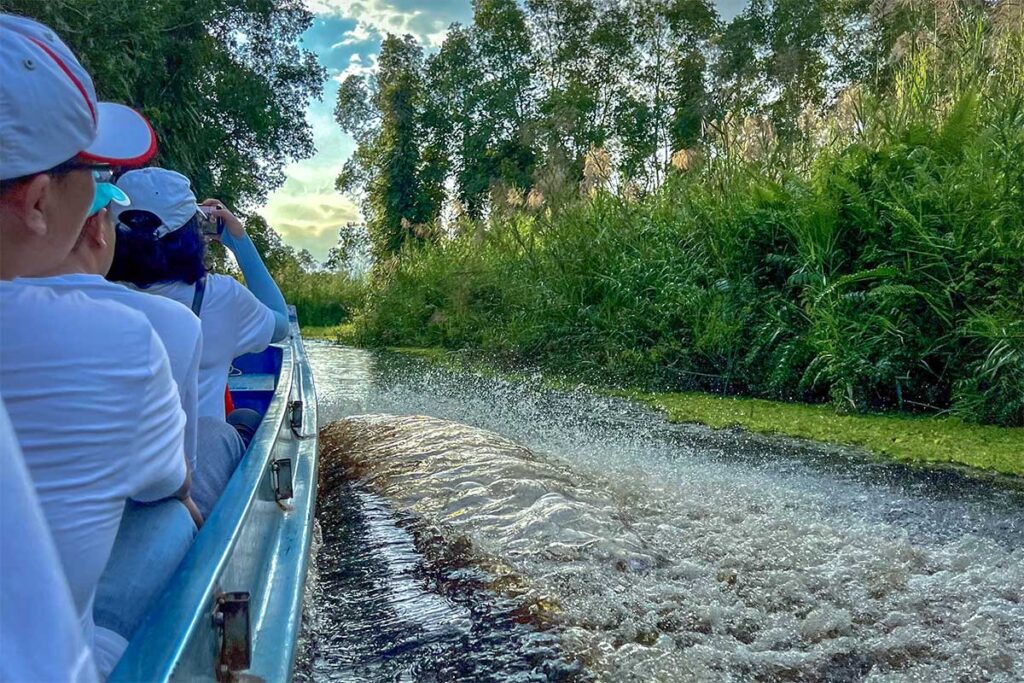
The park feels wild and undeveloped compared to more polished destinations in the Mekong Delta. Facilities are basic, and signage isn’t always clear, so first-time visitors may find it tricky to navigate without a local driver or guide. That said, if you enjoy raw nature, boat rides through quiet canals, and the chance to see birds in a natural setting, it has a strong off-the-beaten-path appeal. Just don’t expect the level of infrastructure or interpretation you might find at bigger, more established national parks.
What can you see & do at U Minh Thuong National Park?
1. Hoa Mai Lake & Observation Tower
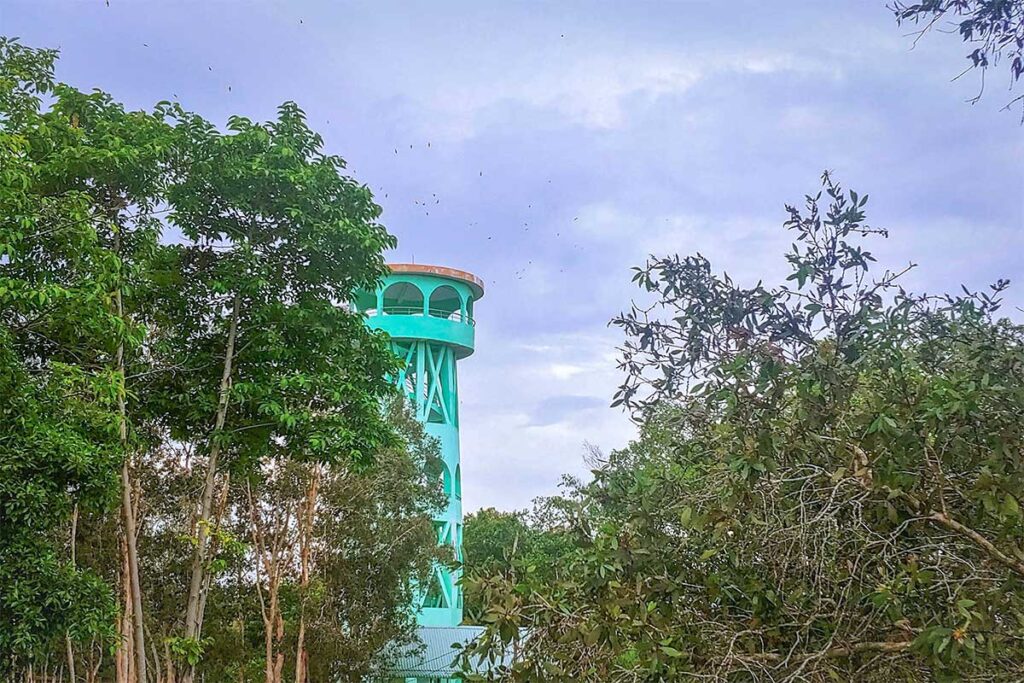
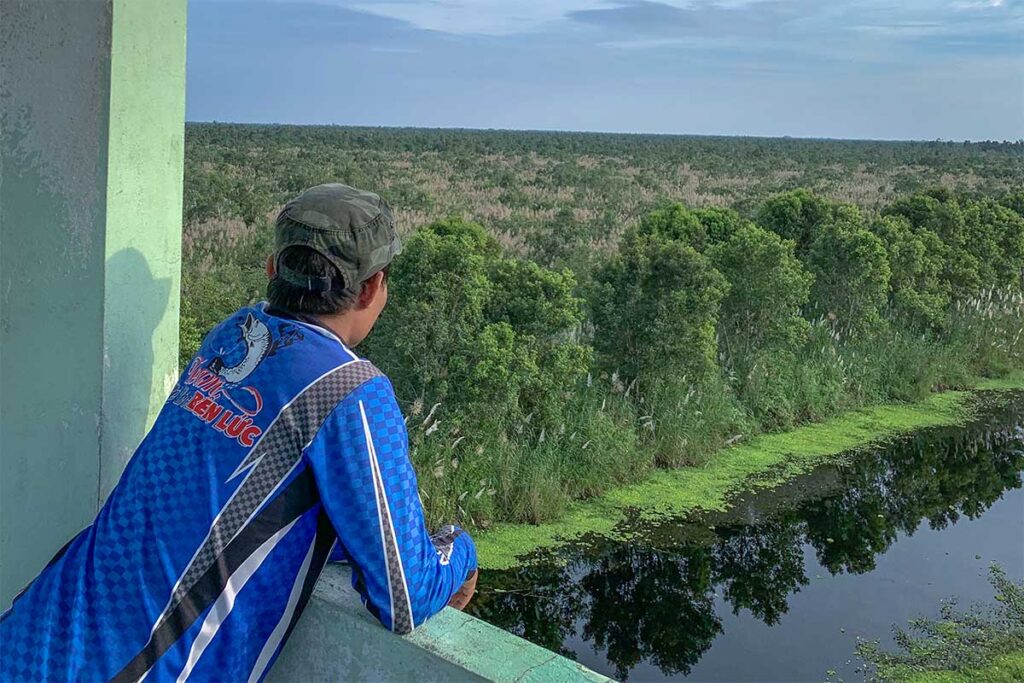
Most visits begin at Hoa Mai Lake, the central hub inside the park. Here you’ll find the ticket counter, boat departures, and a small observation tower overlooking the lake and surrounding canals. It’s a good warm-up spot for a walk, take some photos of the water dotted with lilies, and get oriented before heading deeper into the forest.
2. Boat Ride Through the Canals
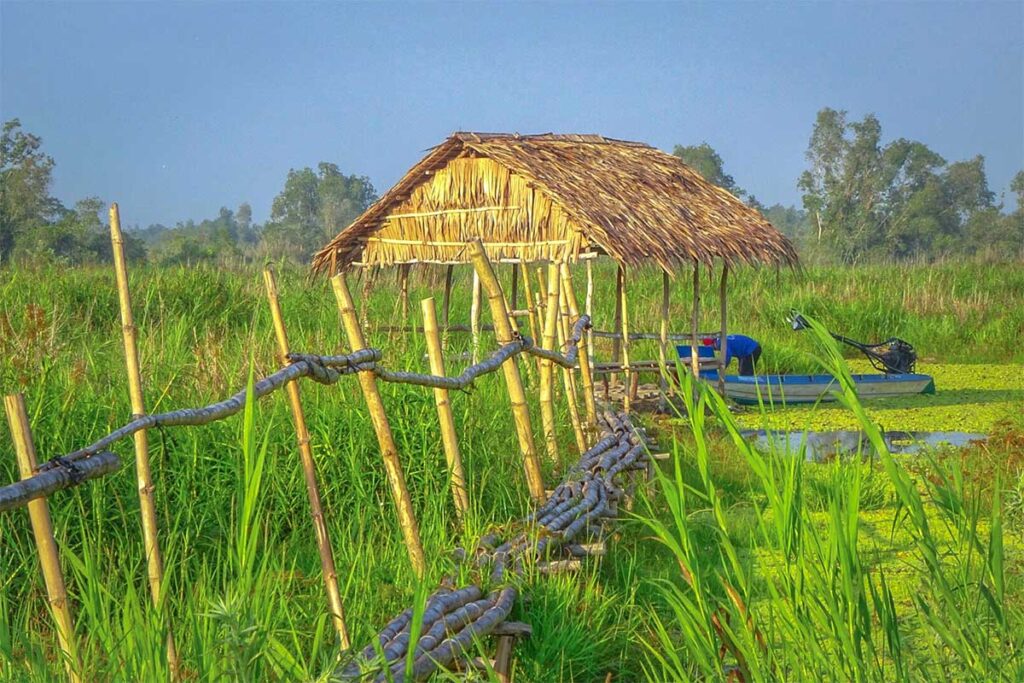
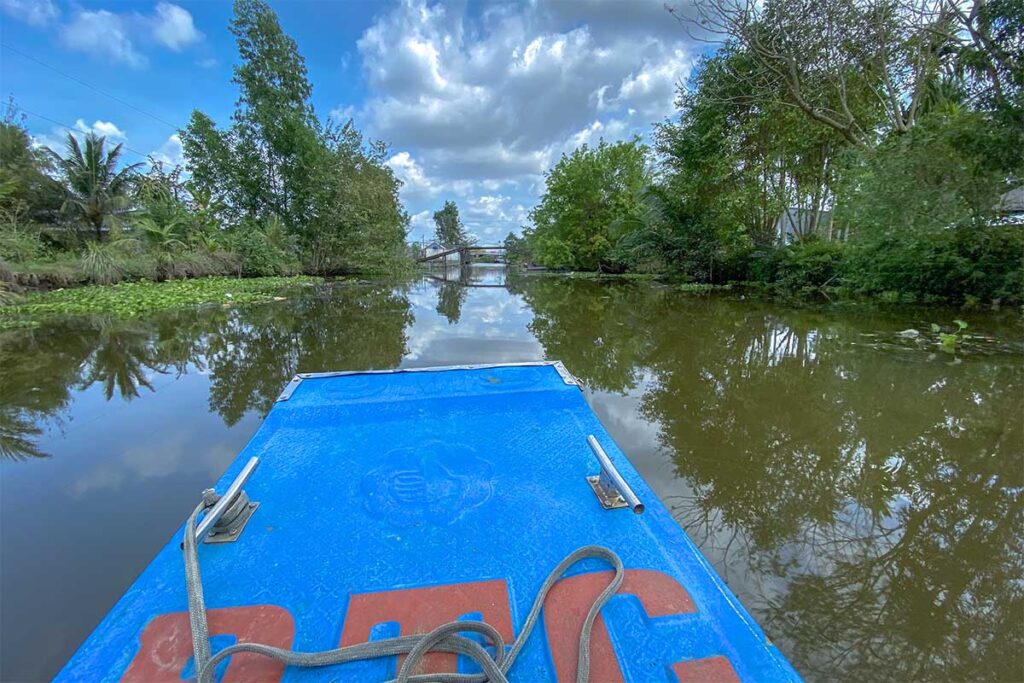
A boat ride is the park’s signature experience. Gliding along tea-colored water, you’ll pass between melaleuca trunks with mats of duckweed and water hyacinths drifting on the surface. It’s a beautiful way to feel immersed in the swamp ecosystem. Motorboats are the most common option, though they can be noisy and sometimes scare off birds—if possible, ask for a slower or quieter ride. Prices are usually around 20,000–30,000 VND per person for motorboats or 30,000 VND per trip for small sampans.
3. Trang Chim (Bird Sanctuary) & Lookout
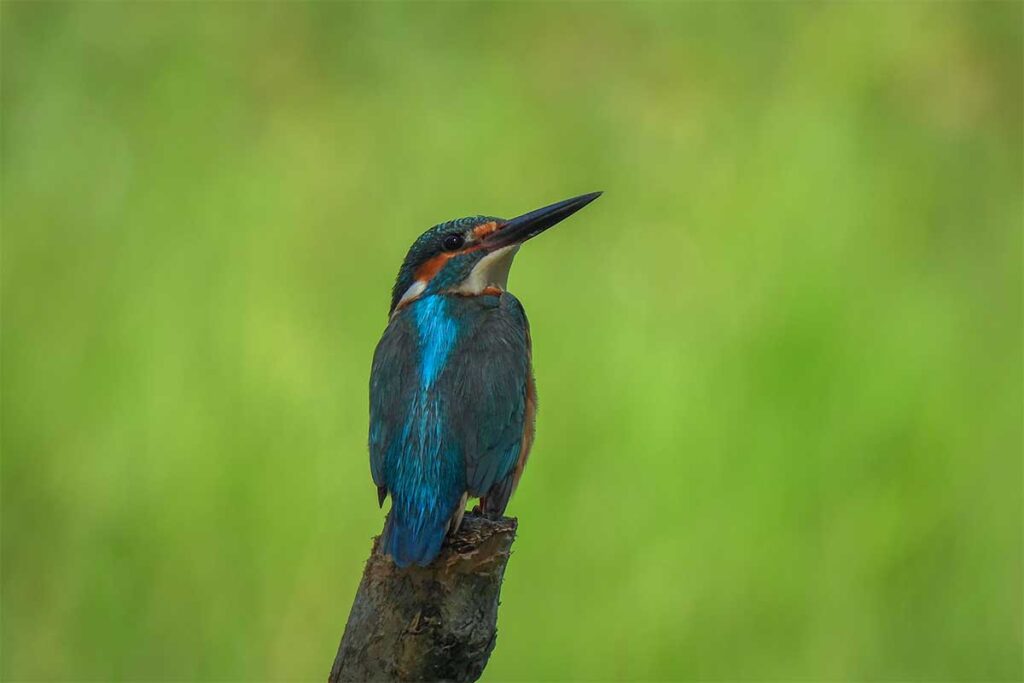
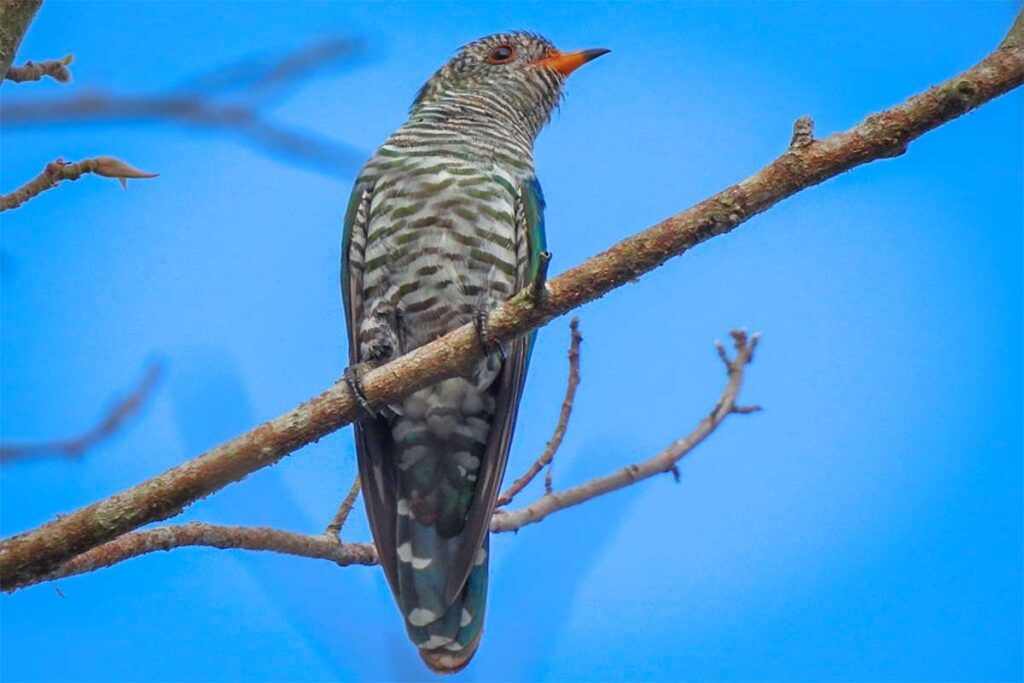
The Trang Chim bird sanctuary is one of the most rewarding parts of the park, especially during the wet season when thousands of birds gather. To reach it, you cross a bamboo bridge and climb a lookout tower surrounded by tall melaleuca trees. The best times are early morning or late afternoon when the light is soft and bird activity is highest. Bring binoculars if you’re serious about spotting rarer species.
4. Vong Lâm Đài Viewpoint
This simple observation deck gives panoramic views of the peat-swamp forest. From here you can appreciate just how vast and green the ecosystem is, with canals cutting through the forest canopy. It’s especially atmospheric in the late afternoon when the light turns golden.
5. Short Trails & Boardwalks
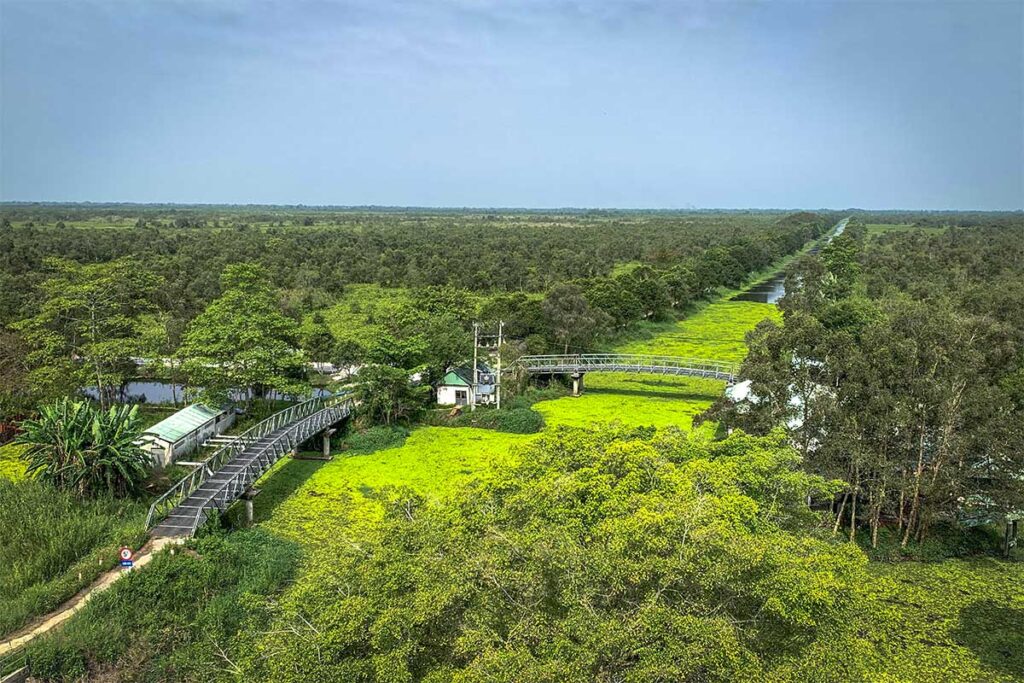
Near Hoa Mai Lake there are a few short walking trails and boardwalks into the forest. They’re an easy way to experience the swamp landscape on foot, though they can become muddy or even flooded in the rainy season. In the wet months, leech socks are useful if you plan to walk deeper into the vegetation.
6. Wildlife Rescue & Education Center
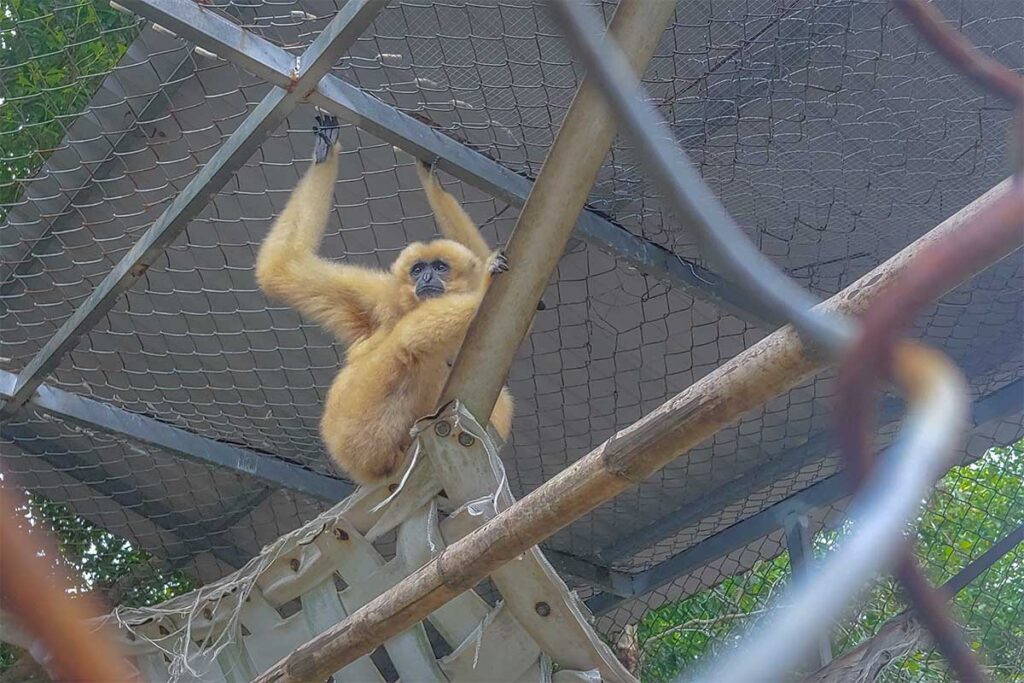
Close to the administrative area, this small center cares for animals that were injured or confiscated from the wildlife trade. It’s a quick but worthwhile stop to learn about local conservation work. It won’t take long, but it gives context to the park’s broader role in protecting biodiversity.
7. Low-Key Activities
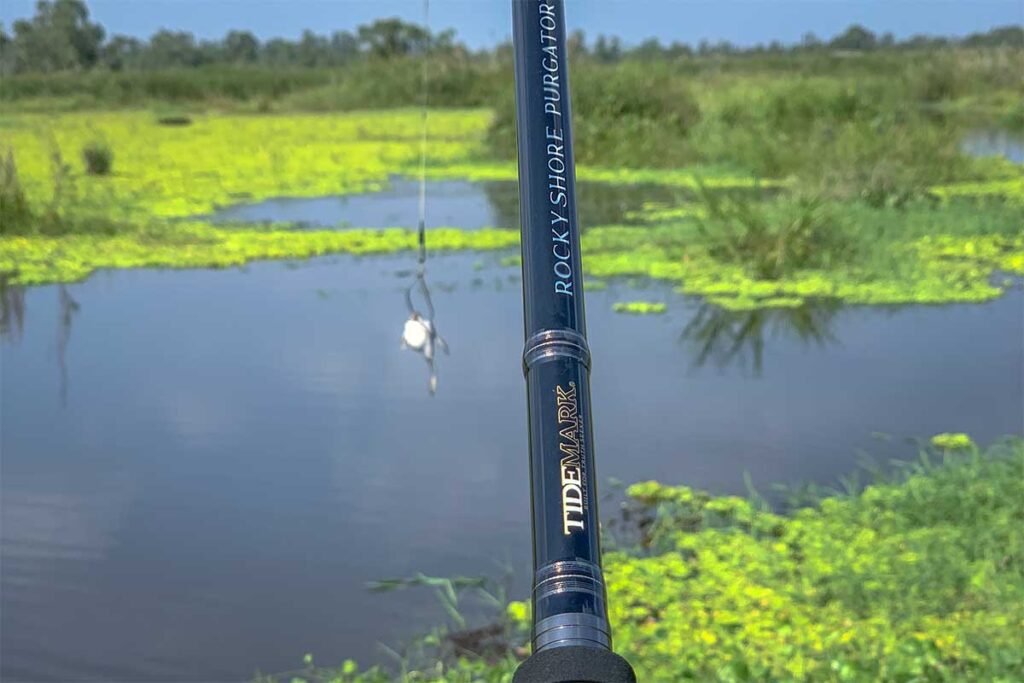
Besides sightseeing, the park sometimes allows basic fishing experiences in designated areas. Tickets for fishing are around 40,000 VND per trip. You can also try simple local meals near the headquarters, though opening hours can be irregular and options limited—don’t count on a full restaurant service.
Best time to visit U Minh Thuong National Park
Why timing matters
U Minh Thuong is a wetland and peat-swamp ecosystem, so the experience changes a lot depending on the season. Water levels determine how far boats can travel, while bird activity peaks at certain times of the year. If you come in the wrong season, you may find trails closed for fire prevention or spend more time battling mosquitoes than enjoying the scenery. Planning around the seasons makes a big difference.
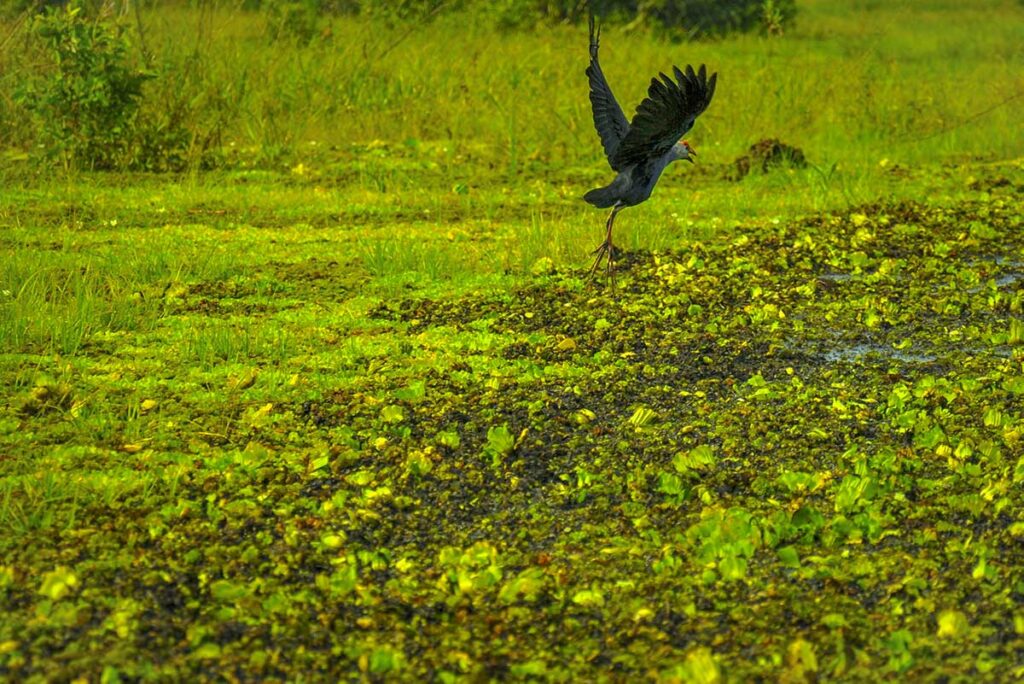
Month-by-month overview
- August–November (flood season): Water levels are at their highest, making boat rides the most scenic and easiest. This is also peak birding season, with large flocks visible at bird sanctuaries. The weather is humid, with afternoon showers common, so a raincoat is handy. This is generally considered the best time to visit.
- December–February: Conditions are drier and cooler, which makes walking more comfortable. Bird numbers thin out slightly, but it’s still a good balance between weather and wildlife.
- March–April: The park is at its driest, and management often restricts some areas because of fire risk. Bird activity is quieter, and scenery can feel less lush. If you visit, check access in advance.
- May–July: Rain returns, greening up the forest and filling the canals again. It’s a beautiful time for lush landscapes, but also when mosquitoes and leeches are most active. Sudden storms can affect travel plans, so flexibility is key.
Weekday vs Weekend, Time of Day
Weekdays are noticeably quieter than weekends, when local visitors come in larger numbers. If you want more peace and better wildlife encounters, avoid public holidays and weekends if possible. For the best experience, plan to visit early in the morning or late in the afternoon—wildlife is more active, the light is softer for photography, and the midday heat is easier to avoid.
How to visit U Minh Thuong National Park
Orientation & Bases
The most practical base for visiting U Minh Thuong is Rach Gia City, about 50–65 km away depending on the route. From Ho Chi Minh City it’s a long day—roughly 275–360 km depending on whether you travel by road only or combine with a regional flight. The park gate and visitor area are set deep in the countryside, and Google Maps pins can sometimes be inconsistent. For clarity, the Ramsar-listed coordinates of the core area are 09°35′38″N 105°05′42″E, which can be useful when navigating by GPS.
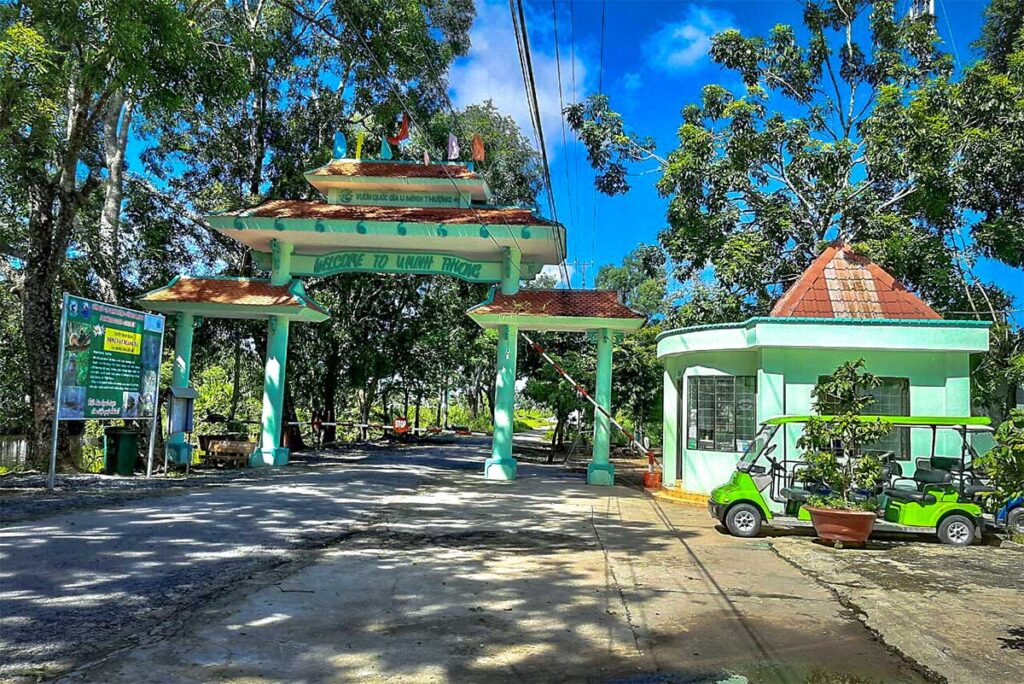
Getting There
- Private car with driver – The easiest option for first-time visitors. Local drivers know the correct road detours to the park gate, which can be confusing otherwise. This also allows you to combine the park with other Kien Giang countryside stops.
- Self-drive motorbike – Roads are generally flat and manageable, but signage can be sparse. Download offline maps and allow extra time. Best suited to those already comfortable riding in Vietnam.
- Public bus + xe ôm (motorbike taxi) – Buses along Highway 63 drop passengers at junctions such as Cống Cạn, from where you can continue by local motorbike taxi. This is cheap but slower and requires some Vietnamese, as English is rarely spoken.
- Local guide / ranger arrangement – The most effective way to actually experience the park. Guides or rangers know the routes and where wildlife is likely to be seen. These arrangements can be made through a homestay, hotel, or a travel agency.
Map Quirks & Wayfinding
Navigation can be tricky: Google Maps sometimes misplaces the entrance or suggests detours that don’t work. To avoid problems, confirm the route with your driver and save the key coordinates in advance. The Ramsar-listed coordinates for the park’s core zone are 09°35′38″N 105°05′42″E, and saving a pin for Hoa Mai Lake is especially useful.
Practical visiting information & Travel tips
Hours & Fees
There is no official signposted schedule, but the park is open from early daylight hours until late afternoon. There is no entrance fee for the park itself; however, to actually explore inside you’ll need to join a boat tour or activity, each with its own small fee. Expect around 20,000 VND per person for a motorboat, 30,000 VND per trip for a sampan, and 40,000 VND for fishing permits.
Tickets & Boats
Tickets are sold at the Hoa Mai Lake visitor kiosk, which is also the departure point for boat rides. Boat tours usually last 45–75 minutes, depending on the route. The motorboats are efficient but noisy, while small sampans feel quieter and more atmospheric. Policies and prices can shift slightly, but they remain very affordable.
Facilities
Facilities are basic. There is parking for cars and motorbikes, a simple information point at Hoa Mai Lake, and a few drink stalls. A small restaurant sometimes operates, but its hours are inconsistent. If you want a proper meal, plan to eat in Rach Gia or at roadside spots along Highway 63.
What to bring & Safety
Pack for the climate: insect repellent, sun protection, a hat, and light long-sleeved clothing are essentials. During the wet season (June–October), leech socks are useful for walking trails. Bring your own water and snacks, as food services inside may close early. Respect the wildlife—don’t feed monkeys or birds, and keeping quiet will improve your chances of spotting animals.
Photography & Birding tips
The best conditions for both photography and birding are the first and last two hours of daylight, when the light is softer and wildlife is more active. Binoculars make a big difference for birdwatching. If you hire a boat, ask the driver to go at a slower pace, as noisy engines tend to spook birds.
Is U Minh Thuong National Park worth visiting?
U Minh Thuong National Park is rewarding if you’re after something wild, quiet, and off the tourist trail. The peat-swamp scenery is striking, boat rides feel adventurous, and there’s genuine potential to see interesting wildlife. The atmosphere is very local, and you’re unlikely to run into many foreign visitors.
That said, it’s not the easiest park to explore. Facilities are basic, directions can be confusing, and English-speaking support is rare. For travelers who want a smoother first experience of Vietnam’s wetlands, Tram Chim National Park (great for wet-season birding with clearer infrastructure) or Lung Ngoc Hoang Nature Reserve near Can Tho (smaller, easier to reach) might be better fits. But if you enjoy DIY travel and don’t mind some effort, U Minh Thuong offers a far less commercialized slice of the Mekong Delta’s nature.
